Homemade Rosehip Arthritis Balm Recipe
A recipe for Rosehip Arthritis Balm for potenial pain relief.
Age may just be a number, but the whispers of genetics often find their way into our lives sooner than we expect. Despite being far from old (at least I think! I am in my early 30s as I write this!), I’ve come to realize that arthritis, an ailment that has a history of running in my family, is making its presence known. Lately, I’ve noticed the subtle signs in my own hands – a reminder that our immune systems and our bodies, regardless of age or predisposition, require care and attention.
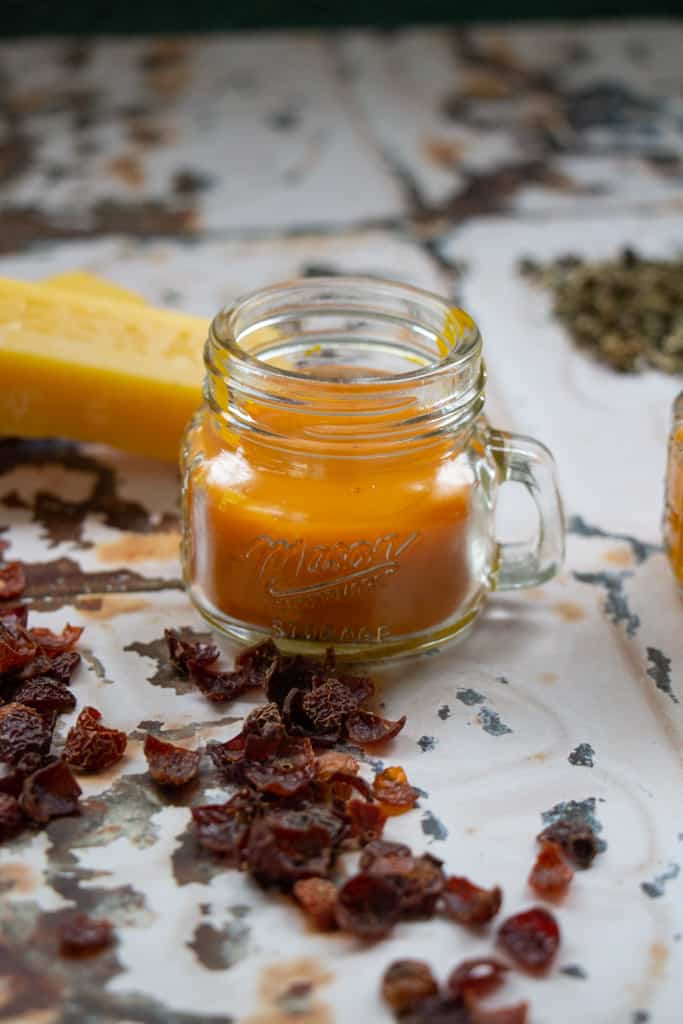
Medical disclaimer: I am not a medical professional and I am not claiming that these herbs are a substitute for professional care. Always consult a professional for medical advice when starting natural remedies at home. These are just things that I use and love in my own home.
About the Balm
After working with my hands, I will notice that they sometimes freeze up or kind of “fall asleep” by the end of a busy day. I wanted to make something that would ease my symptoms but also feel luxurious to apply. Enter, rosehip arthritis balm.
Rosehip oil, with its potent blend of vitamins, antioxidants, and anti-inflammatory properties, is known for its arthritis benefits (source: Versus Arthritis). It is often taken internally but can be absorbed through the skin as well. As a bonus, it is also a great way to soothe dry hands. Comfrey oil is also an arthritis ally with anti-inflammatory properties (and honestly, it’s just so nice for the skin that I wanted to add it in!).
As a reminder, this is just a recipe I am trying for myself. Different herbs work for different people and I am not a medical expert. Arthritis is a very complex issue and should be discussed with your doctor or medical care provider. I am simply sharing my experience as I move toward natural remedies.
Rosehip Arthritis Balm Recipe
My favorite place to buy herbs online is Starwest Botanicals (affiliate link).
Ingredients:
- 3 TBSP dried rose hips
- 1 TBSP dried comfrey leaves
- 1/8 cup sea buckthorn oil
- 1/4 cup olive oil
- 1 tablespoon beeswax pellets
Note: Sea Buckthorn oil is pretty orange! If you have fair skin, you might want to use more olive oil and less sea buckthorn so you don’t have an orange glow!
Tools + Equipment
- Double Boiler
- Mortar and Pestle or Food Processor
- Fine Mesh Strainer or Cheesecloth
- Glass Jars or Tins
- Measuring Cups and Spoons
- Stirring Utensil
- Containers for Melting Beeswax
Make sure all your tools and equipment are clean and dry before you begin, and use heat-resistant materials when handling hot ingredients to ensure safety during the preparation process.
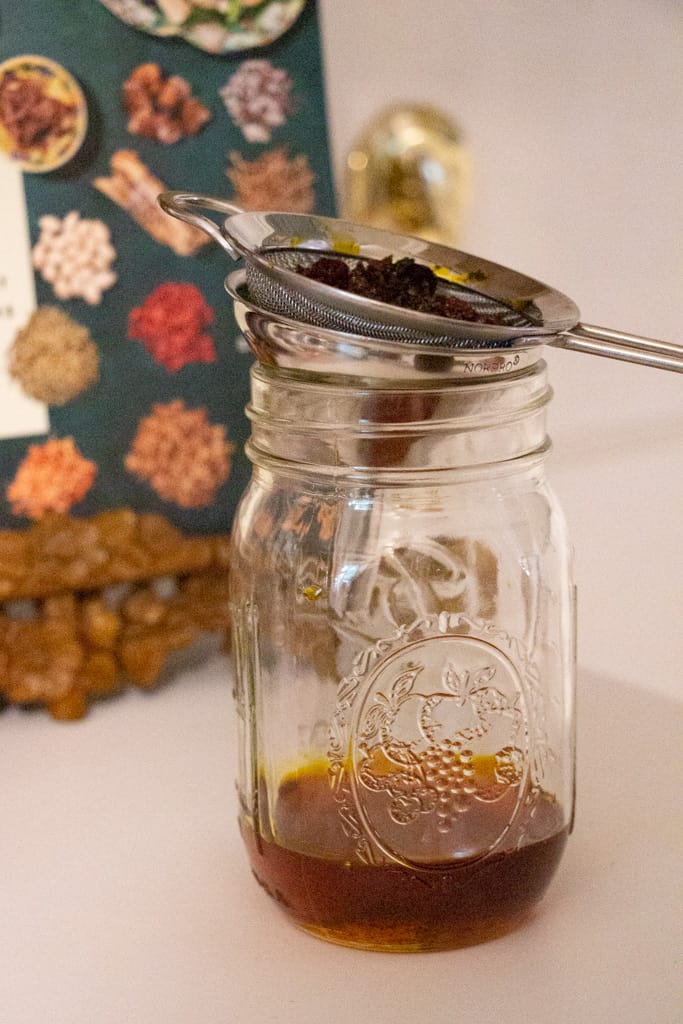
Instructions:
- Prepare the Ingredients: Crush the dried rosehips and comfrey into smaller pieces using a mortar and pestle or a food processor.
- Infuse the Oils: Place the crushed rosehips and comfrey leaves in a clean, glass bowl with the oils.
- In a double boiler, gently heat oil and dried herbs. Simmer (just barely) for about 1-4 hours. To fully reap the benefits of the herbs, a longer infusion would be most beneficial. You can also use a crock pot on low to infuse these herbs for 8-12 hours.
- Strain the Oil: After the infusion period, strain the oil through a fine mesh strainer or cheesecloth into a clean bowl or container. Squeeze out as much oil from the herbs as possible.
- Prepare the Balm: In a double boiler, melt the beeswax pellets over low heat until fully liquid.
- Combine Ingredients: Once the beeswax is melted, add the infused rosehip and comfrey oil to the melted beeswax. Stir well to combine.
- Cool and Store: Carefully pour the mixture into clean, dry glass jars or tins for storage. Allow the balm to cool and solidify at room temperature.
- Usage: Apply a small amount of the Rosehip Arthritis Balm to the affected joints or areas of discomfort. Massage it gently into the skin until absorbed. Use as needed, especially when experiencing arthritis pain or stiffness.
Optional: If you have the time, a cold infusion of herbs can be best to maintain all of the herbs’ healing properties. Instead of using a double broiler to infuse the herbs, seal the herbs and oils in a jar and place it in a cool, dark place away from direct sunlight for about 4 weeks. Shake the jar gently every day to help with the infusion process. Then continue to step 4.
Note:
- Sea buckthorn oil is chosen for its anti-inflammatory and healing properties. If you are allergic to sea buckthorn or prefer a different carrier oil, you can substitute it with another carrier oil such as coconut oil, cocoa butter, olive oil, jojoba oil or sweet almond oil.
- Make sure to store the balm in a cool, dark place to extend its shelf life. If you notice any unusual changes in color, smell, or texture, discontinue use.
- Before using any new skincare product, especially if you have sensitive skin or underlying medical conditions, it’s a good idea to do a patch test to check for any adverse reactions. If irritation occurs, stop using the product.

All About Rosehips
What are Rosehips?
Rosehips are the small, round, and often bright red or orange fruit of the wild rose (Rosa) plant. These fruits develop after the rose petals have fallen off. Rosehips are typically small and berry-like, measuring anywhere from 1/4 inch to 1 inch in diameter, depending on the rose species.
Rosehips are known for their nutritional value and have been used for centuries in traditional medicine and culinary applications. They are particularly prized for their high content of vitamin C, as well as other vitamins, minerals, and antioxidants. Some of the key characteristics and uses of rosehips include:
Uses for Rosehips
- Vitamin C Richness: Rosehips are one of the richest plant sources of vitamin C. They contain significantly more vitamin C than citrus fruits like oranges. Vitamin C is essential for immune system support, skin health, and overall well-being.
- Antioxidant Properties: Rosehips are packed with antioxidants, including flavonoids, carotenoids, and polyphenols. Antioxidants help protect the body’s cells from oxidative damage caused by free radicals.
- Medicinal Uses: In traditional medicine, rosehips have been used to make teas, tinctures, and supplements. They are believed to have anti-inflammatory, immune-boosting, and pain-relieving properties. Rosehip supplements are sometimes taken to support joint health, including in cases of arthritis.
- Culinary Uses: Rosehips can be used in cooking and baking. They are often made into jams, jellies, syrups, and herbal teas. The tart flavor of rosehips can add a unique and slightly tangy taste to various recipes.
- Skin Care: Rosehip oil, extracted from the seeds of rosehips, is used in skincare products for its skin-nourishing and anti-aging properties. It is valued for its ability to hydrate the skin, reduce the appearance of scars and fine lines, and promote skin regeneration.
The best roses for rosehip oil are Rosa canina (Dog Rose), Rosa rugosa (Rugosa Rose), Rosa Galica (Gallica Rose), and Rosa canina ‘laxa’ (Hips and Haws Rose).
Note:
While rosehips have numerous health benefits, they also contain small seeds with fine hairs that can be irritating if ingested. Therefore, when using rosehips in culinary applications, it’s common practice to strain the seeds and hairs out to make them safe for consumption. Additionally, if you’re foraging for wild rosehips, make sure you correctly identify the plant species, as some species of roses produce toxic hips.
Can you use rosehip powder in this recipe?
Yes, you can use rosehip powder in the Rosehip Arthritis Balm recipe, although the texture and consistency of the balm may be slightly different compared to using whole dried rosehips. Rosehip powder is essentially dried and ground rosehips, and it still retains many of the beneficial properties of whole rosehips.
Here’s how you can incorporate rosehip powder into the recipe:
- Adjust the Amount: Instead of using whole dried rosehips, use an equivalent amount of rosehip powder. You can start with the same quantity, such as 1/2 cup, as specified in the original recipe.
- Infusion Process: Follow the same infusion process as described in the original recipe, but with the rosehip powder instead of whole rosehips. Place the rosehip powder and comfrey leaves in the glass jar, add the sea buckthorn oil, and allow it to infuse for 2-4 weeks. Shake the jar daily to ensure proper mixing.
- Straining: When it’s time to strain the infused oil, you may need to use a finer mesh strainer or cheesecloth to remove any fine particles of rosehip powder that might have passed through.
- Proceed with the Recipe: After straining, proceed with the recipe as usual, including melting the beeswax and combining it with the infused rosehip and comfrey oil.
Can you use fresh rosehips in this recipe?
Using fresh rosehips in this recipe is possible, but it would require some modifications to the process. Fresh rosehips contain moisture, and this can impact the infusion and balm-making process (it can mold!). Here’s how you can use fresh rosehips:
- Harvesting and Preparing Fresh Rosehips:
- First, ensure that you have properly identified and harvested edible rosehips from a non-toxic rose variety.
- Wash the fresh rosehips thoroughly to remove any dirt or debris. You can also cut off the stem ends.
- Drying Fresh Rosehips:
- To reduce the moisture content and prevent mold growth during the infusion process, it’s advisable to dry the fresh rosehips before use.
- Lay the washed rosehips in a single layer on a baking sheet or dehydrator tray.
- Dry them at a low temperature (around 100-120°F or 37-49°C) until they are fully dehydrated. This may take several hours to a day, depending on the moisture content.
- Infusion Process:
- Once the fresh rosehips are dried, you can follow the same infusion process as outlined in the original recipe using the dried rosehips. Place the dried rosehips and comfrey leaves in the glass jar, add the sea buckthorn oil, and allow it to infuse for 2-4 weeks.
Rosehip Herbal Benefits
Rosehip oil is often considered beneficial for arthritis due to its unique composition of essential fatty acids, vitamins, and antioxidants. Here’s a more detailed explanation of why rosehip oil can be beneficial for arthritis:
- Rich in Omega-3 and Omega-6 Fatty Acids: Rosehip oil is a good source of essential fatty acids, including linoleic acid (omega-6) and alpha-linolenic acid (omega-3). These fatty acids have anti-inflammatory properties and can help reduce inflammation in the joints, which is a hallmark of arthritis.
- Vitamins: Rosehip oil is packed with vitamins, particularly vitamin C and vitamin A (retinol). Vitamin C is an antioxidant that helps protect the joints from oxidative stress and can support collagen production, which is important for joint health. Vitamin A supports tissue repair and helps maintain the integrity of joint cartilage.
- Antioxidants: Rosehip oil contains a variety of antioxidants, including carotenoids, flavonoids, and polyphenols. These antioxidants help neutralize free radicals in the body, which can cause joint damage and contribute to arthritis symptoms.
- Anti-Inflammatory Properties: The combination of fatty acids, vitamins, and antioxidants in rosehip oil can help reduce inflammation in the joints. Inflammation is a key driver of arthritis pain and stiffness.
- Skin Penetration: Rosehip oil is easily absorbed by the skin, allowing its beneficial compounds to penetrate deep into the joint tissues. This can provide direct relief to the affected areas.
- Moisturizing and Skin Nourishing: Arthritic joints are often accompanied by dry, irritated skin. Rosehip oil can help moisturize and nourish the skin, providing relief from dryness and discomfort.
As a bonus, rosehip oil can also help aging skin by reducing the appearance of scars, the appearance of fine lines and dark spots, and moisturizing dry skin.
What are other ways to use rosehips for arthritis?
Rosehips can be used in various ways to potentially alleviate arthritis symptoms and support joint health. Here are some other ways to use rosehips for arthritis:
- Rosehip Tea:
- Rosehip tea is a popular and simple way to consume rosehips. You can find rosehip tea bags or loose-dried rosehips at health food stores.
- Steep a teaspoon of dried rosehips in a cup of hot water for about 10-15 minutes. Drink it as a soothing tea.
- The high vitamin C content in rosehip tea can help boost your immune system and reduce inflammation associated with arthritis.
- Herbal tea is my go-to for healing any ailment. You can check out my herbal tea series for more tea information!
- Rosehip Supplements:
- Rosehip supplements, available in various forms like capsules, tablets, or powders, are a convenient way to incorporate rosehip into your daily routine.
- These supplements often provide concentrated doses of rosehip extract or powder, which can support joint health and reduce arthritis-related inflammation.
- Topical Rosehip Oil:
- Rosehip oil, when applied topically, can help moisturize and nourish the skin around affected joints.
- Massaging rosehip oil onto arthritic joints may provide relief from dryness and discomfort.
- Rosehip Jam or Syrup:
- Rosehip jam or syrup can be a delicious way to enjoy the benefits of rosehips. You can spread it on toast or use it as a sweetener for beverages.
- Keep in mind that the sugar content in these products should be monitored if you have dietary restrictions.
- Incorporate Rosehips into Recipes:
- You can add dried rosehips to various recipes, such as oatmeal, smoothies, or baked goods, to introduce their unique flavor and potential health benefits into your diet.
Note:
It’s important to note that while rosehip oil can be a valuable addition to an arthritis balm, it may not provide a complete solution on its own. Arthritis is a complex condition, and treatment often involves a combination of approaches, including medications, physical therapy, lifestyle changes, and topical treatments like balms.
Rosehips can be an Arthritis Ally!
As we embrace the world of skincare products and natural remedies, remember that you have the power to take charge of your health and comfort. Whether you’re dealing with arthritis, dry hands, or simply seeking a moment of self-care, this Rosehip Arthritis Balm can be a soothing companion on your journey.
Let’s continue to explore the wonders of nature, harnessing the wisdom of herbs, and crafting our own healing solutions. After all, the path to wellness is a journey worth taking, one recipe at a time.
Before using any new product for arthritis management, it’s advisable to consult with a healthcare professional or a dermatologist, especially if you have underlying medical conditions or are taking medications. They can provide personalized guidance and ensure that the treatment aligns with your specific needs and circumstances.
Pin it for Later!


About the Author:
I’m Brittany, totally modern and mainstream turned crunchy mama!
Read more here about how I went from a totally incompetent cook and hyper-consumer to striving to live a more meaningful life from scratch.
I can’t wait to share my modern homesteading journey with you and I hope I inspire you to join along!

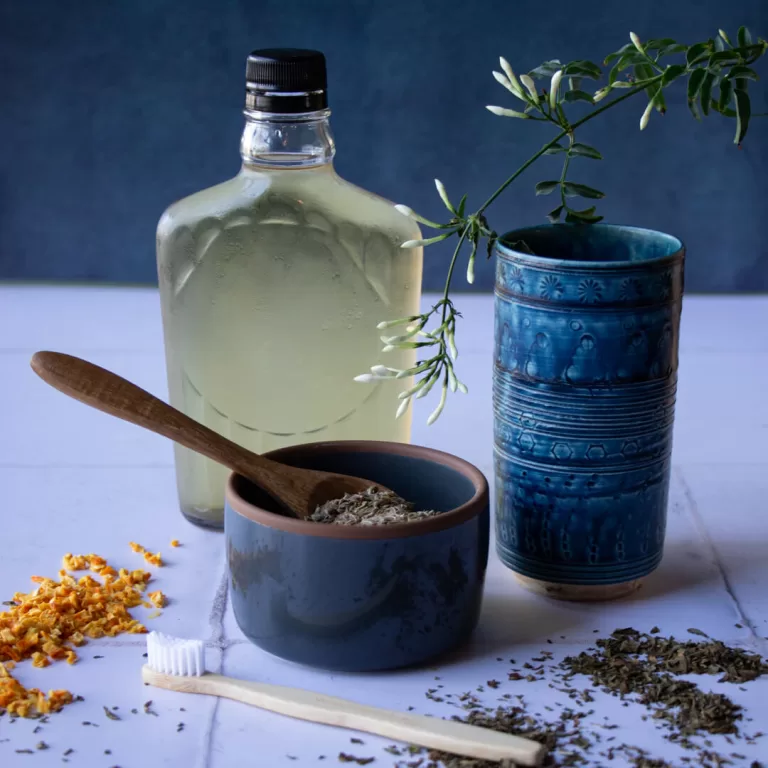
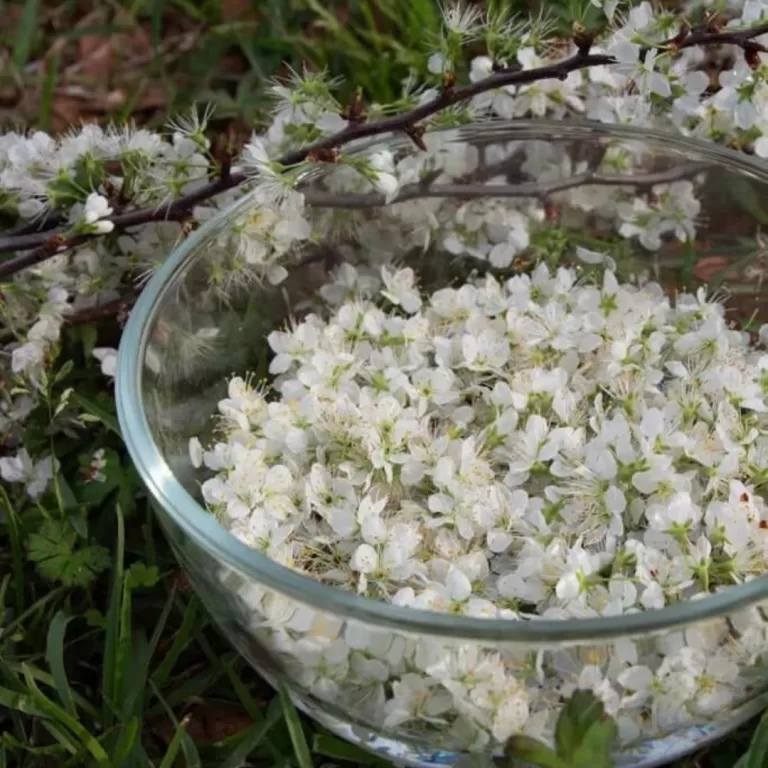
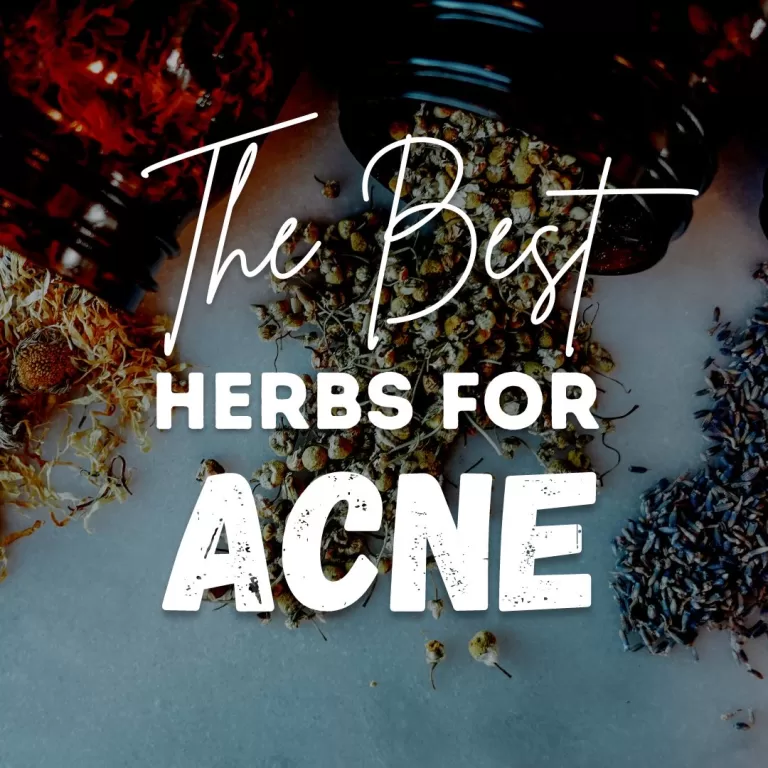
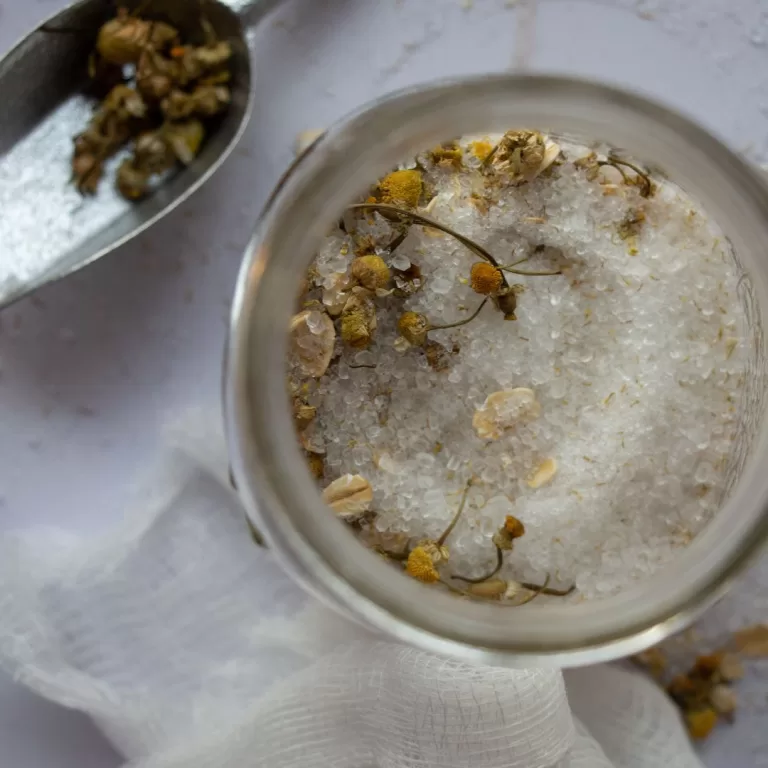
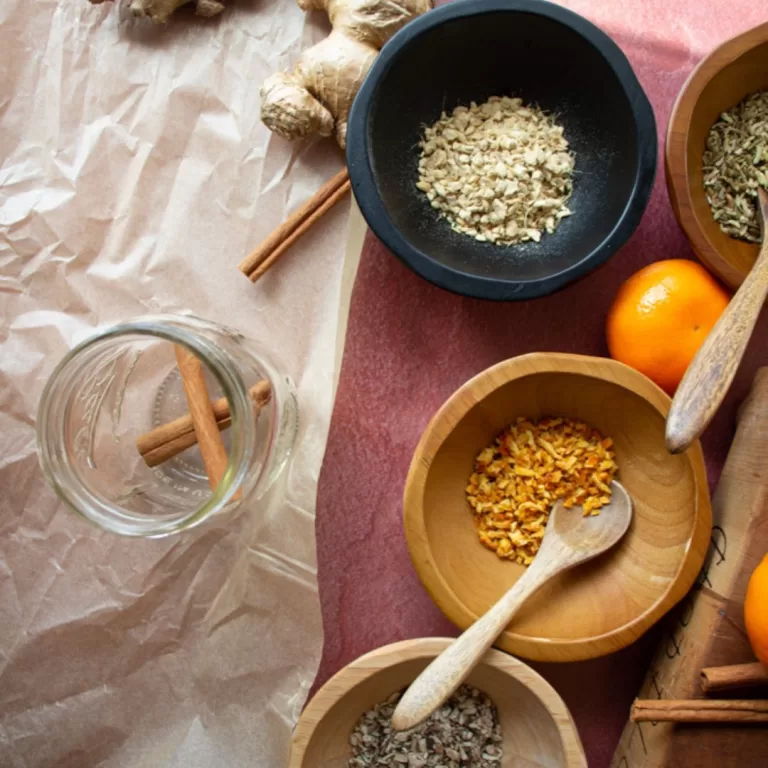
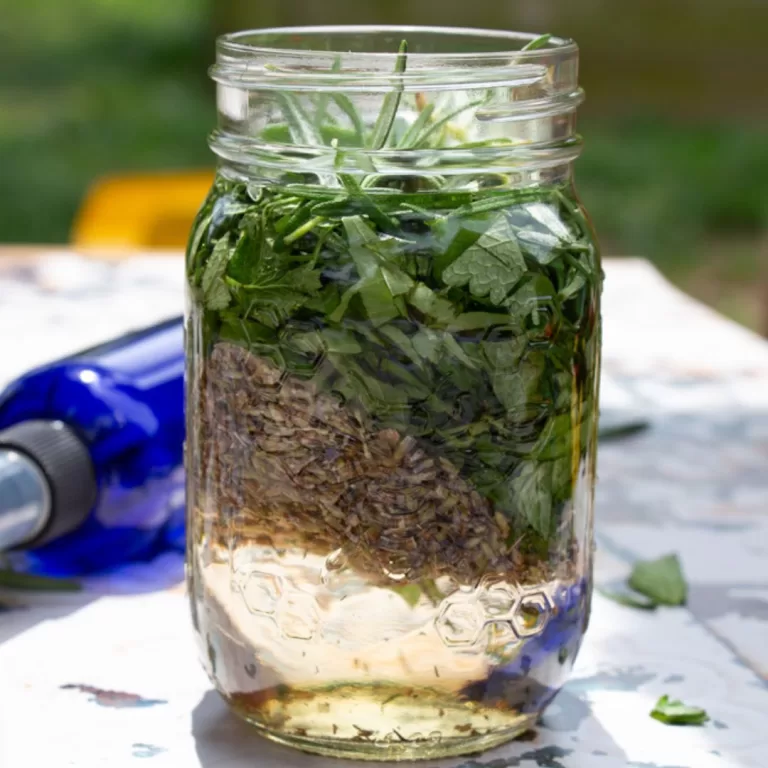
Can I use shea butter in place of sea buckthorn oil?
Thank you!
Yes! But you might not even need beeswax if you use shea. Maybe just a pinch if you have it! You could replace the sea buckthorn with olive oil or almond oil for a more 1-1 swap.